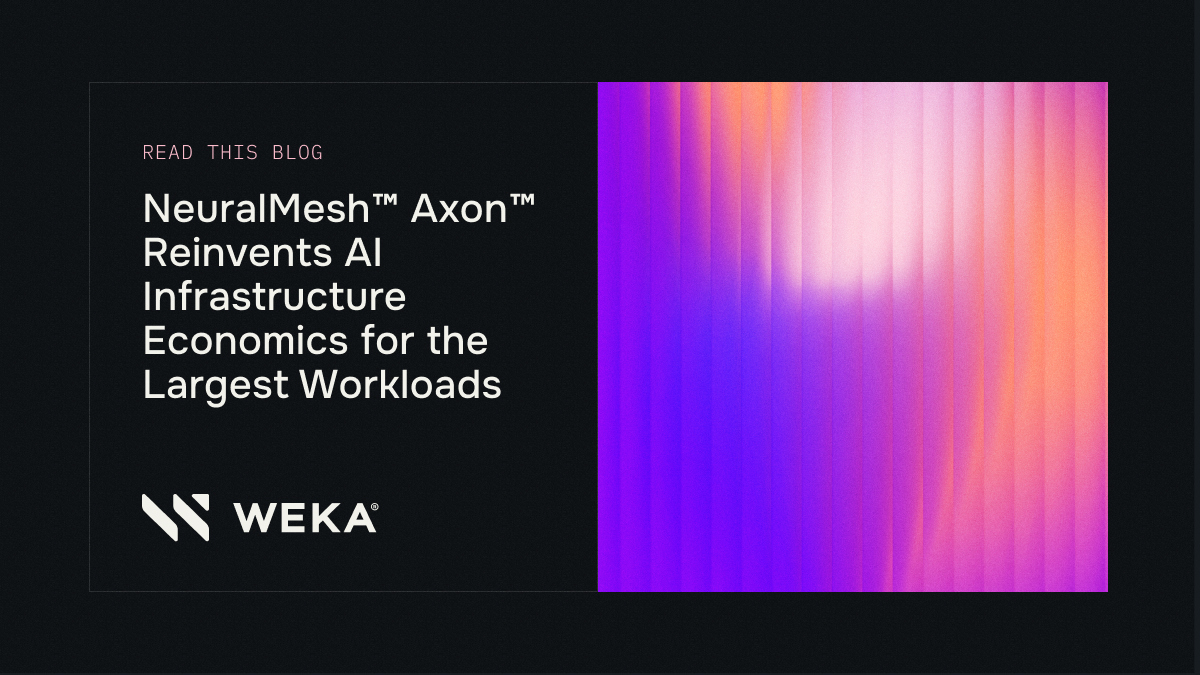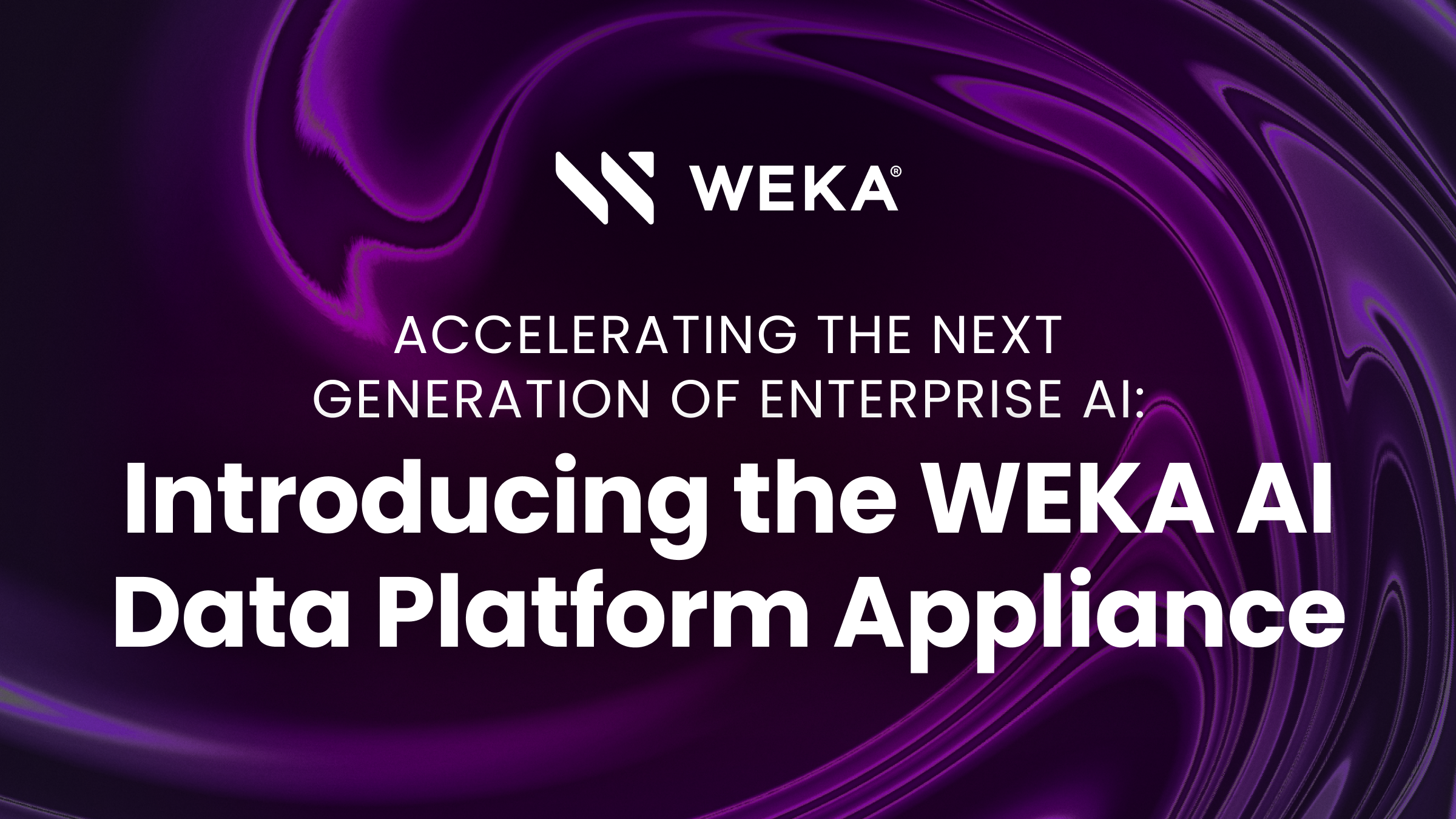Why a New Approach to Storage is Needed to Power Today’s AI Workloads

And how WEKA is delivering what legacy architectures can’t
In today’s AI-driven, data-intensive world, storage is no longer just a place to park files—it’s a critical part of the application pipeline. From large-scale model training to real-time inference, workloads demand performance, agility, and resilience that monolithic or appliance-based storage systems simply weren’t designed to handle.
That’s why a service-oriented architecture built around microservices is no longer a “nice to have” in storage—it’s a requirement.
The Problem with Traditional Storage Architectures
Legacy storage systems were designed in an era of predictable workloads, fixed infrastructure, and modest scale. Their architectures are typically monolithic, hardware-dependent, and rigid. When these systems encounter:
- Spiky or unpredictable I/O patterns
- Massive scale across compute and storage
- Multi-tenant usage
- Rapid software iteration cycles
- Cloud-native environments
…they falter. Performance bottlenecks emerge. Upgrades become risky. Resource utilization drops. And your ability to move fast grinds to a halt.
What Microservices Bring to the Table
Delivering the performance required by modern AI applications requires a completely new approach. Today’s storage must meet the scale, speed, and complexity of distributed, data-intensive workloads—and that means moving beyond monolithic, hardware-bound designs. A modern approach to storage architecture must deliver the following core capabilities:
- Modularity: Storage micro-services (e.g., protocol handling, data protection, telemetry) are decoupled and run independently.
- Elasticity: Services can scale up or down based on demand, without disrupting the rest of the system.
- Isolation: Failures in one component don’t cascade across the platform, enabling fault tolerance and protect from noisy neighbors in multitenant environments.
- Agility: Upgrades and changes can be rolled out with minimal impact, enabling continuous operations.
- Portability: Container-based services can run anywhere—bare metal, cloud, hybrid—without needing custom infrastructure.
A modern service-oriented architecture, built on containers and microservices, delivers these capabilities by design—making it the foundation for storage that can keep pace with the rest of your modern infrastructure.
Nearly every layer of the modern data center has embraced a service-oriented architecture. Compute is delivered through containers and serverless functions. Networking is managed by software-defined platforms and service meshes. Observability, identity, security, and even AI inference pipelines run as modular, scalable services. Databases and caching layers are offered as fully managed, distributed systems.
This is the architecture the rest of your stack already uses. It’s time for your storage to catch up.
How NeuralMesh™ by WEKA Delivers It
NeuralMesh was built from the ground up as a software-defined, container-native storage platform. Every major service runs in its own orchestrated container and is optimized to operate independently across on-prem, cloud, and hybrid environments.
- Storage-as-code: Define and deploy with precision via orchestration and API-driven workflows.
- Dynamic scaling: Add capacity or spin up new services without downtime.
- Microsecond latency: Avoid the legacy overhead of layering, involuntary kernel context switches, and hardware bottlenecks.
- Multi-tenancy by design: Isolated service execution with strong QoS and resource control.
In other words, NeuralMesh delivers not just high-performance storage—but a modern storage architecture that grows with your infrastructure, adapts to your workloads, and aligns with the way your engineering teams already work.
Your infrastructure is already service-oriented. Your storage should be too.
Learn More About How WEKA Delivers Microservices-Native Storage




